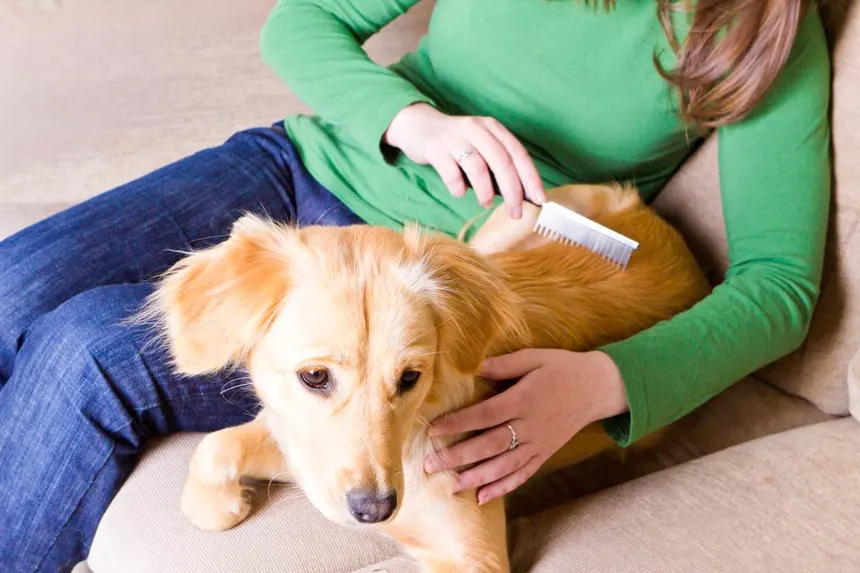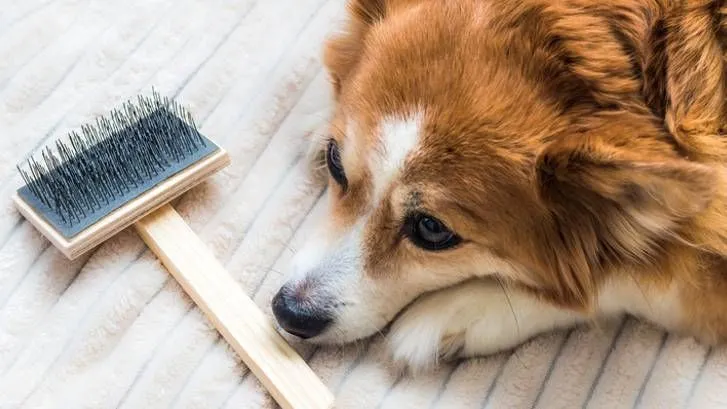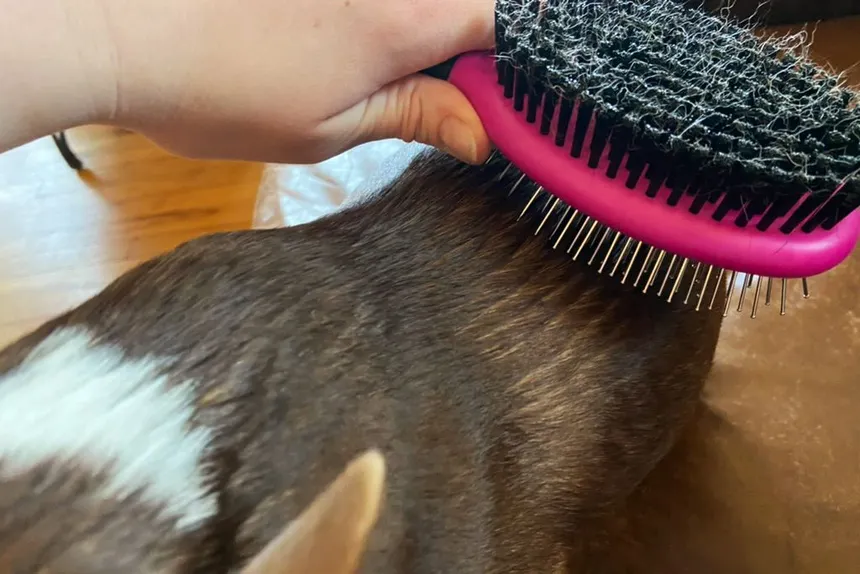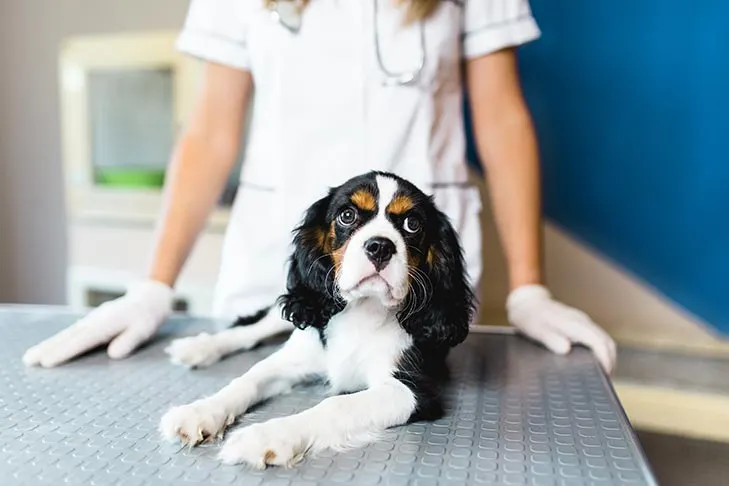Most dogs hate getting brushed due to fear, past trauma, or discomfort. You can make brushing easier by using the right tools, introducing brushing slowly, and using positive reinforcement.
Why Does My Dog Hate Getting Brushed? Tips to Make It Easier

Many dogs hate getting brushed because it hurts, scares them, or reminds them of past trauma. To make it easier, start slow, use gentle tools, and reward calm behavior.
Brushing shouldn’t be a battle. But for countless Australian pet owners, it is. At Careers Collectiv, we understand how frustrating it can be to care for a dog that fights every grooming session. This guide will help you understand the “why” behind the behavior and give you practical, proven ways to make grooming stress-free—for both you and your dog.
Understanding Why Dogs Hate Being Brushed
Dogs usually hate brushing because they associate it with pain, fear, or discomfort. The root cause could be:
- Past trauma – Rough handling or painful mat removal can create negative associations
- Sensitive skin – Skin irritation, matting, or medical conditions can make brushing painful
- Fear of tools or restraint – Loud, unfamiliar brushes can be intimidating
- Breed-specific issues – Some breeds have coats that require more delicate handling
Behavioral studies show that dogs remember uncomfortable sensations vividly. If your dog had a bad brushing experience early on, they may continue to resist grooming unless retrained.
Dog Hates Being Brushed? Signs You Need to Look For

If your dog hides at the sight of a brush, it’s not random. Watch for these behaviors:
- Pulling away or trying to escape
- Growling, whining, or snapping
- Tail tucked, ears back, or licking lips
- Freezing or shaking
- Biting the brush or your hand
These are classic signs of dog grooming anxiety and fear-based resistance. Recognizing them early can help prevent escalation.
Grooming Mistakes That Make Brushing Worse
It’s not always the dog’s fault. Sometimes, we accidentally make brushing worse:
- Brushing too hard or fast – Even with the right brush, aggressive handling causes pain
- Wrong brush type – A slicker brush on a sensitive coat can feel like sandpaper
- No detangling spray – Brushing dry mats tugs painfully at the skin
- Loud or chaotic environment – Noise and movement trigger anxiety
Avoiding these missteps goes a long way in reducing brushing resistance.
Best Brush for Dogs Who Hate Brushing

Choosing the right grooming tool is critical. Different coat types need different brushes:
- Short coats (e.g., Staffy, Beagle): Bristle brush or rubber curry brush
- Long coats (e.g., Maltese, Collie): Slicker brush or pin brush
- Curly coats (e.g., Poodle, Cavoodle): Detangling comb plus slicker
- Double coats (e.g., Husky, Shepherd): Undercoat rake or de-shedding tool
Look for ergonomic, gentle grooming brushes. Soft-grip handles and rounded bristles can help ease resistance in sensitive dogs.
Train Your Dog to Like Brushing With Positive Reinforcement
Training a dog to enjoy brushing is not only possible—it’s effective.
Here’s how to do it:
- Use treats and praise every time your dog lets you touch the brush
- Begin with short 30-second sessions, then build up
- Make brushing part of a relaxing routine
- Use dog-calming sprays or vet-approved calming aids
Reward calm behavior, not perfect behavior. Gradual exposure paired with positivity can rewrite their brush-related fears.
Step-by-Step: How to Brush a Dog That Hates It
Use this simple process to rebuild your dog’s trust:
- Let your dog sniff the brush — no pressure, just curiosity
- Start in a quiet, familiar room — somewhere safe
- Touch only the areas they’re okay with — like the back or chest
- Stop if they seem uncomfortable — always end on a positive note
- Build up time slowly — over days or weeks
A brush shouldn’t just touch their coat—it should become part of their bonding routine.
When to Call a Groomer or Vet

If brushing causes injury, fear, or aggression, professional help is necessary. Seek expert help when:
- Your dog growls or bites at grooming
- The coat has tight mats close to the skin
- Brushing causes bleeding, skin damage, or visible distress
Look for mobile groomers that specialize in anxious pets or groomers trained in low-stress handling. If you suspect pain, consult a vet to rule out skin conditions or orthopedic issues.
Brushing Tips Based on Coat Type
Some dogs are naturally harder to groom. Breed-specific brushing helps:
- Short coats: Brush weekly to remove dead hair and stimulate skin
- Long coats: Daily brushing to prevent painful knots
- Curly coats: 3–4 times a week to manage dense, mat-prone fur
- Double coats: Brush during shedding seasons (spring and autumn)
Use detangling sprays and coat conditioners to make brushing more comfortable.
Dog Hates Brushing? Try These Grooming Alternatives
If brushing is off the table for now, try low-stress options:
- Grooming gloves — mimic petting while removing loose hair
- Waterless shampoos — clean without baths or brushes
- Towel rubdowns — great for nervous dogs post-walk
- Silicone bristle pads — gentle and massage-like
These aren’t long-term replacements, but they help maintain coat health during retraining.
Where to Buy Dog Grooming Supplies in Australia
For Australian pet owners, the right tools are just a click away. Trusted stores include:
- Pet Circle – Large range of gentle brushes and sprays
- Petbarn – Nationwide chain with expert advice
- VetShop Australia – Vet-approved grooming tools
- Kazoo and Rufus & Coco – Australian brands with calming products
For hands-on help, search “mobile dog groomer near me” or visit trainers who specialize in grooming desensitization.